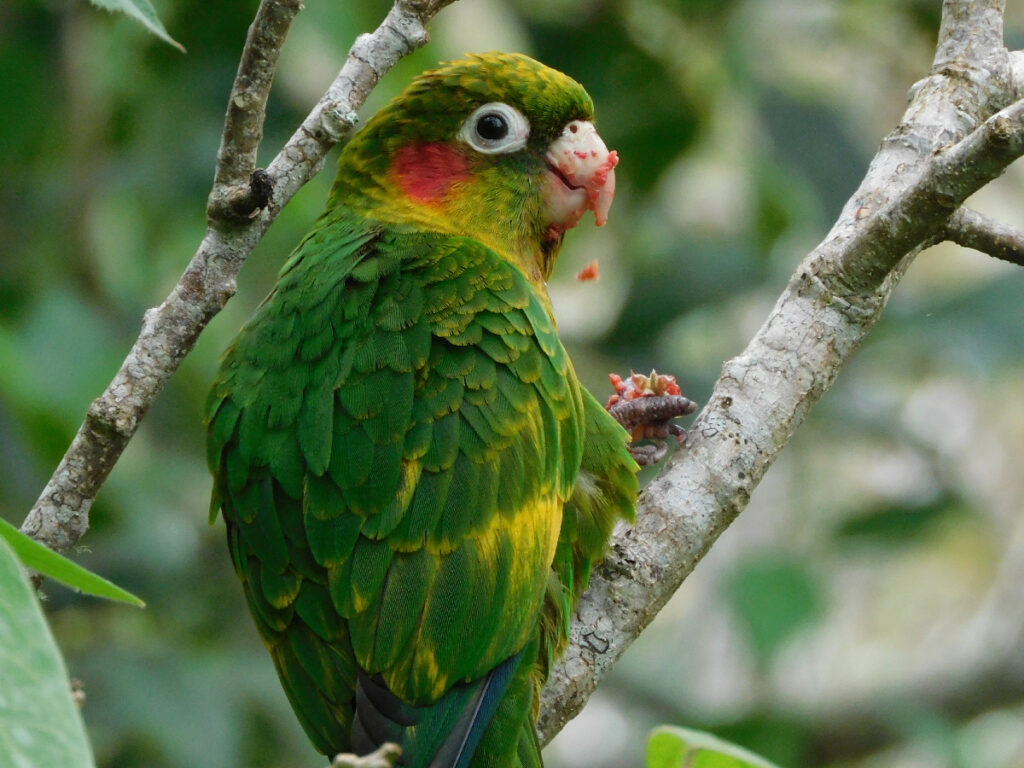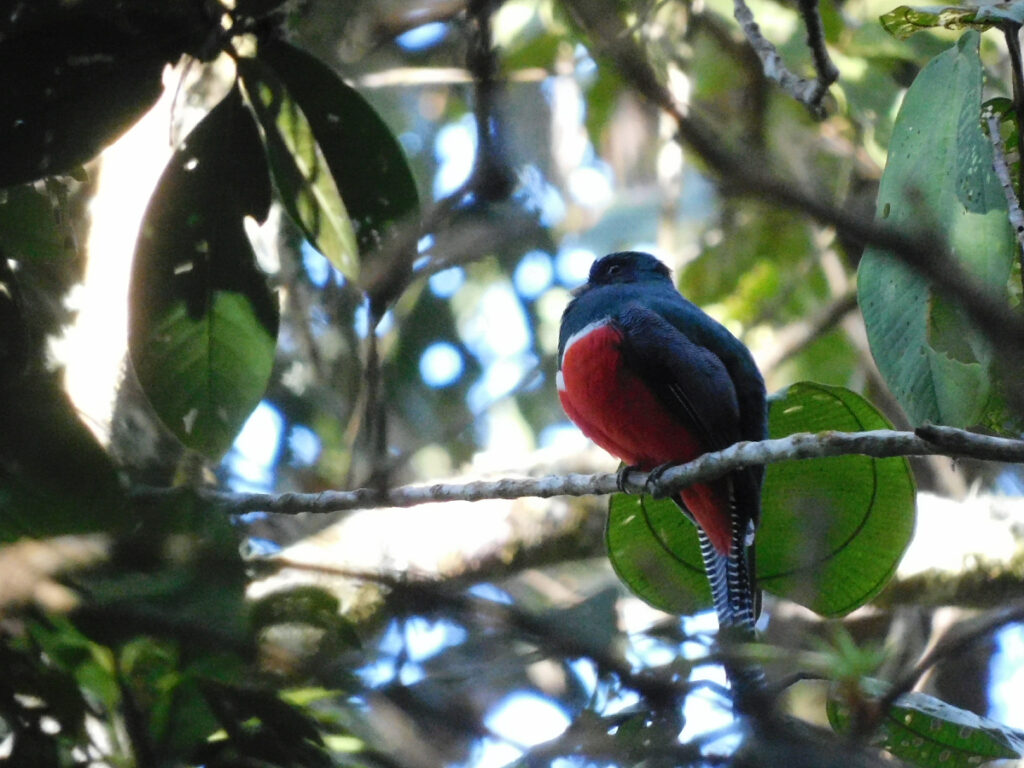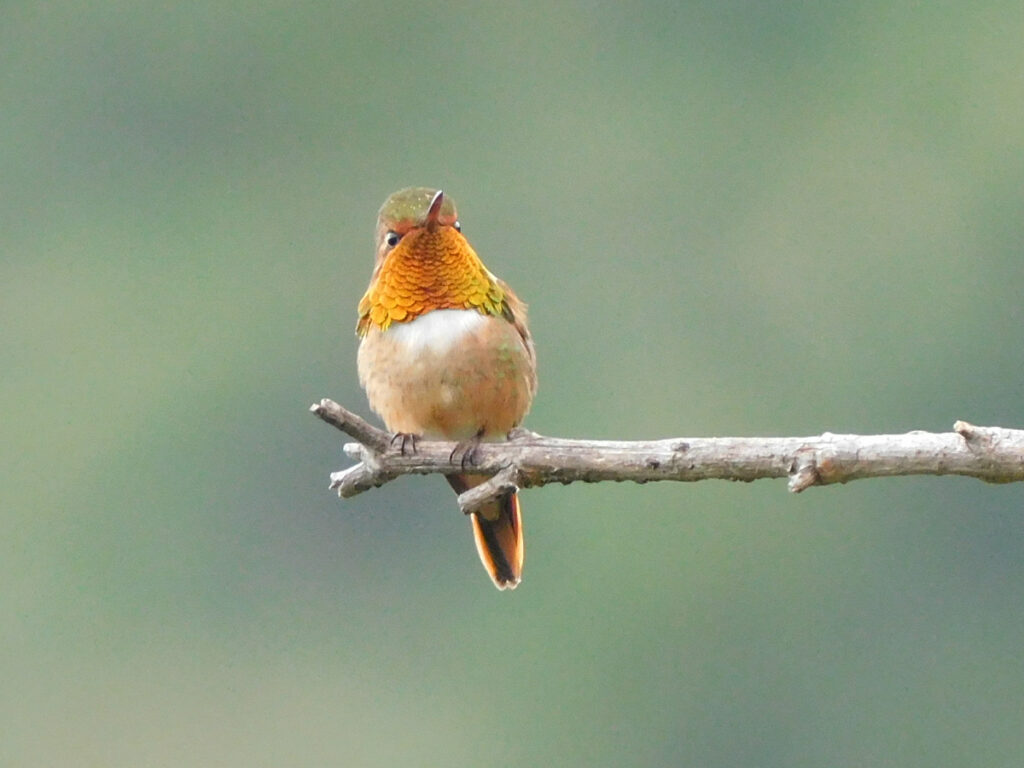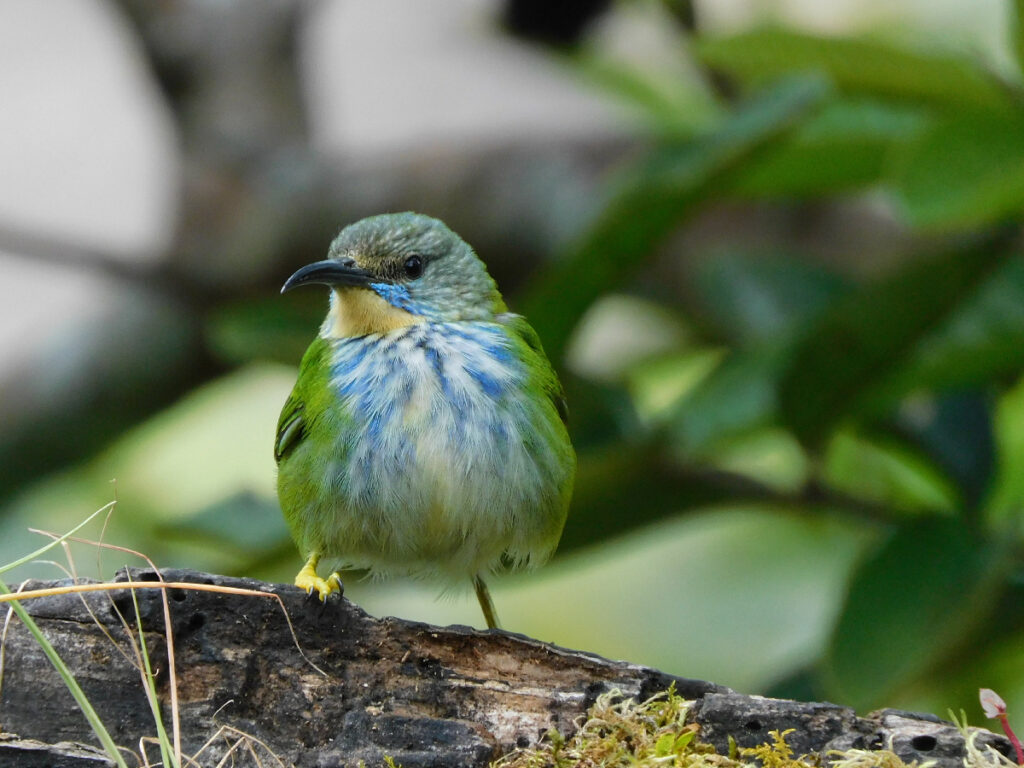
At Cloudbridge, we currently have a list of over 300 species of birds that are present within the reserve. While this seems like an unbelievable amount for a relatively small area, it really comes down to the uniqueness of this habitat. Tropical montane cloud forests, like Cloudbridge, are known to have high endemism on top of having species that are found all throughout Costa Rica and Central America [endemic species: those that are found in a single defined geographic location, i.e. an island or mountain range]. Our lush cloud forest boasts about 40 endemic species that we know of! This means that those species are only found within the Talamanca mountains, which extends from central Costa Rica into western Panamá. You may be wondering, how on earth does one create a list of species when biodiversity is so dense?

The answer is to do thousands of surveys. Over the course of 5 years, one of our previous scientific coordinators Jennifer Powell in addition to dozens other researchers, interns, and volunteers completed an astounding 3,700+ surveys in order to create a substantial bird species list. This included point count and walking surveys, as well as using camera trap footage as a means to record as much data as possible. Obviously it turned out quite successful, and because of this research Cloudbridge has been able to confidently define a more accurate bird species list of what can be found within the reserve. This paper is one of the few that has been peer reviewed and published by an official science journal, which is an amazing feat.

While creating a species list may not seem like something truly groundbreaking, it really sets the tone for all of the other avian research that is conducted here. Now, we have an idea of what to look out for; a reference for what types of birds are possible to study; what’s likely to be seen; what’s not probable to find; which species are more or less rare than others; etc. Without a species list it becomes exponentially more difficult to study any animal, as the level of uncertainty and doubt increases. To find out more details about what went into creating this species list, and see what species were included in the list, you can find the paper here.

Suggested reading:
- Costa Rica as a whole boasts almost 1000 bird species distributed throughout the country. Being that Costa Rica is only 0.03% of the world’s landmass, this is quite an astounding number of avian species. eBird is a fairly reliable way to check what species are found where, although sometimes it’s nice to see photos of the flamboyantly beautiful species.
- For those of you who are avid bird watchers, here at Cloudbridge we highly recommend using the Merlin app. This app is completely free, and allows you to download bird “packages” depending on where you are in the world. The database is decently accurate, as it gives you various photos of a species, a small description of the behavior and habitat, the sound of each species’ songs/calls, as well as a world distribution map. The researchers at Cloudbridge use this app all the time as it really helps to narrow down the possibilities when you’re just a bit unsure of what bird you saw.
- As stated above, point count surveys are a very accessible and successful way to monitor bird species within an area. There’s some easily digestible literature out there for those who want to know more about it or are curious to try a point count of their own, and of course there’s more complicated deep-dives into the practice for those who are more advanced in the process.
